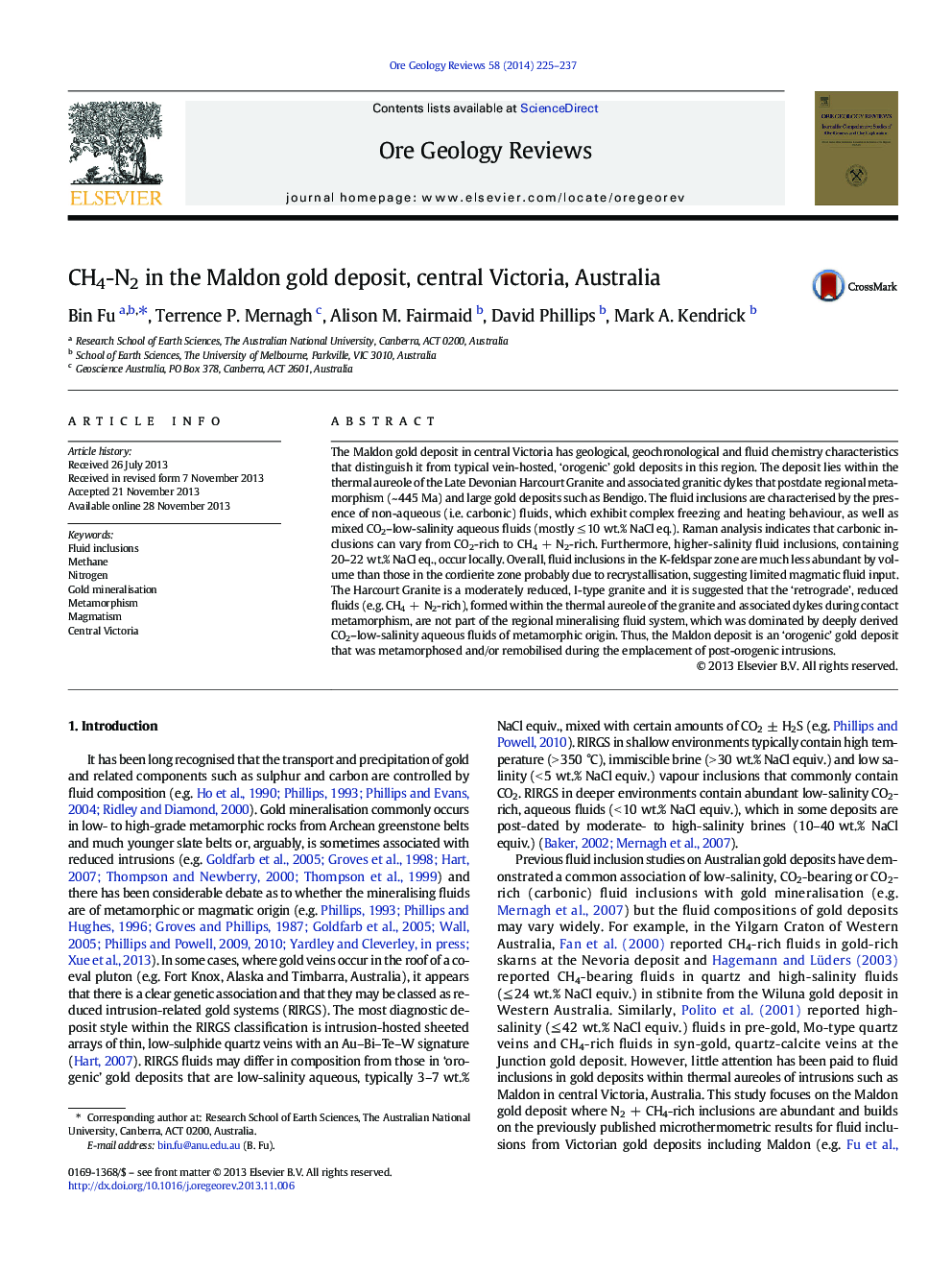| Article ID | Journal | Published Year | Pages | File Type |
|---|---|---|---|---|
| 6435924 | Ore Geology Reviews | 2014 | 13 Pages |
â¢CH4-N2-CO2 inclusions exhibit very complex freezing/heating behaviour.â¢Both methane and nitrogen may have formed by fluid-rock interaction.â¢The Maldon deposit is a reworked 'orogenic' gold deposit.
The Maldon gold deposit in central Victoria has geological, geochronological and fluid chemistry characteristics that distinguish it from typical vein-hosted, 'orogenic' gold deposits in this region. The deposit lies within the thermal aureole of the Late Devonian Harcourt Granite and associated granitic dykes that postdate regional metamorphism (~ 445 Ma) and large gold deposits such as Bendigo. The fluid inclusions are characterised by the presence of non-aqueous (i.e. carbonic) fluids, which exhibit complex freezing and heating behaviour, as well as mixed CO2-low-salinity aqueous fluids (mostly â¤Â 10 wt.% NaCl eq.). Raman analysis indicates that carbonic inclusions can vary from CO2-rich to CH4 + N2-rich. Furthermore, higher-salinity fluid inclusions, containing 20-22 wt.% NaCl eq., occur locally. Overall, fluid inclusions in the K-feldspar zone are much less abundant by volume than those in the cordierite zone probably due to recrystallisation, suggesting limited magmatic fluid input. The Harcourt Granite is a moderately reduced, I-type granite and it is suggested that the 'retrograde', reduced fluids (e.g. CH4 + N2-rich), formed within the thermal aureole of the granite and associated dykes during contact metamorphism, are not part of the regional mineralising fluid system, which was dominated by deeply derived CO2-low-salinity aqueous fluids of metamorphic origin. Thus, the Maldon deposit is an 'orogenic' gold deposit that was metamorphosed and/or remobilised during the emplacement of post-orogenic intrusions.
